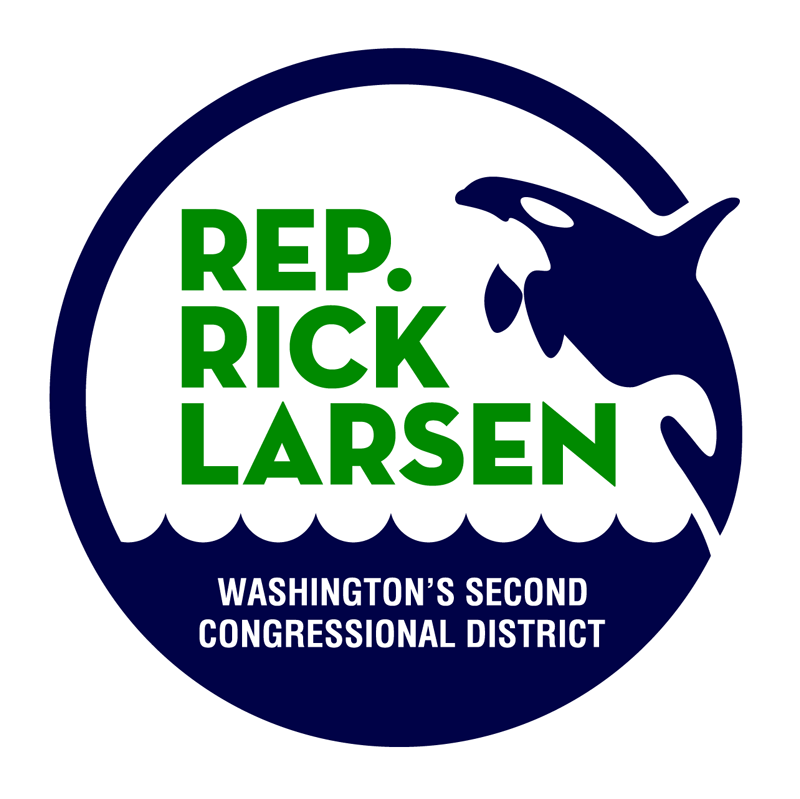Story
Larsen tours state-of-the-art fishing trawler
Washington, DC,
April 26, 2017
Larsen tours state-of-the-art fishing trawler
Sophisticated.
That’s the word Capt. Bob Hezel uses to describe the fishing boat he will captain next winter. The boat, called America’s Finest, is a 262-foot commercial fishing trawler being built by Dakota Creek Industries, which is scheduled to complete construction in November.
America’s Finest will have the smallest carbon footprint of any Alaskan fishing vessel, measured by gallons of fuel consumed per ton of fish, according to Fishermen’s Finest, the Kirkland-based company that hired Dakota Creek to build the boat.
America’s Finest has a fishing net operation, a 1,250-ton freezer, accommodations for 50 people and a factory with robotic equipment. The state-of-the-art boat rivals European and Norwegian fishing boats and is one of the first U.S.-built vessels to incorporate modern design and technology.
Last week, U.S. Rep. Rick Larsen, D-Everett, toured the boat, which currently sits in the water outside Pier 1.
“How we manufacture is changing, and Dakota Creek and Fishermen’s Finest are keeping up with technology and showing how it’s done,” Larsen said.
Hezel has worked for Fishermen’s Finest for more than 20 years and is captain of the 1979 U.S. Intrepid, one of its two vessels. When America’s Finest begins fishing operations in January in the Bering Sea, Hezel and crew will make a 38-year technological leap.
“I love the challenge,” he said.
The upgrade was made possible by CEO and founder Helena Park and her belief that fishermen as stewards of public resources should lead the way in green, efficient technology, said General Manager Kristian Uri, also a company employee of 20 years.
“The vision of Ms. Park has given us the opportunity to work on her project to kick-start the American fishing vessel rebuilding movement,” Uri said.
Many U.S.-built fishing vessels are aging, with an average age of 38 years. That’s because construction of fishing vessels slowed in the 1980s, meaning that technology also fell behind. Before America’s Finest, the last U.S.-built trawler made for fishing in the North Pacific was the 1989 Starbound, which was built by Dakota Creek.
America’s Finest will replace the two boats in Fishermen’s Finest fleet, both built in 1979. Though the company has meticulously maintained its vessels, most industry boats were only built for a 20-year life span.
“There is a wave of new boat-builds coming, and (America’s Finest) is the first Northwest-built one,” Uri said.
The Coast Guard Reauthorization Act of 2010 called for the replacement of vessels made for fishing in the North Pacific, including safety and fuel efficiency updates.
Larsen, as top-Ranking Democrat on the House Subcommittee on the Coast Guard and Maritime Transportation, included language to enable rebuilding.
More than 1,000 new vessels will need to be built to replace Alaska’s aging fleet, according to an industry report from Fishermen’s News.
The boat’s two-year construction has employed 350 Dakota Creek employees each year, and Dakota Creek will continue to do maintenance on the boat.
Fishing vessels, which are Dakota Creek’s specialty, keep jobs in Anacortes and Washington, said Liz Stout, who is overseeing the project for Dakota Creek.
The shipbuilder is experienced in building complicated ships with multiple systems, such as the Navy oceanic research vessels RV Salley Ride and RV Neil Armstrong, which helped give them a leg up on this project, Uri said.
“For (Anacortes) to have this high quality of a shipyard is remarkable, and we’re thankful to be part of it,” he said.
Since the boat’s hull is larger and can store more fish, fewer trips will be made between Alaska’s Dutch Harbor and Seattle. Fuel usage will decrease, but catch will remain the same due to federal fishing quotas.
The operation will almost double its efficiency by utilizing 100 percent of its catch, compared to its current 60 percent. Instead of throwing away fish head and guts, the company will turn them into fish oil and meal.
For workers at sea, quality of life will be improved, Uri said. The hull’s high walls provide some shelter for on-deck workers, one of the boat’s safety improvements, and the boat’s lodgings provide more “creature comforts.”
Hezel mentioned his captain’s quarters will be bigger, but only slightly. There will be an exercise room, a cafeteria and wifi.
Machines or “robots” that unload and load fish reduce hard manual labor, helping prevent injury and allowing employees to gain new skills, said Fishermen’s Finest President Dennis Moran.
It was Park’s boldness and vision that made the project a reality, Uri said. Park immigrated to the U.S. from South Korea in 1973 as a teenager, educated herself and became a leader in the male-dominated industry.
Fishermen’s Finest is the fourth largest female-owned business in Washington, according to a list by the Puget Sound Business Journal.
“(Ms. Park) is definitely in it for the long run,” Uri said.
|
